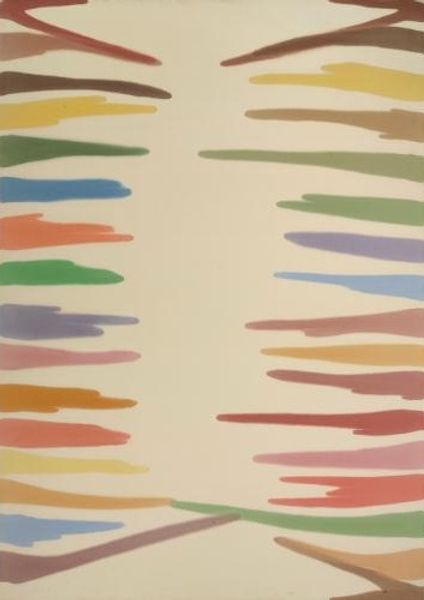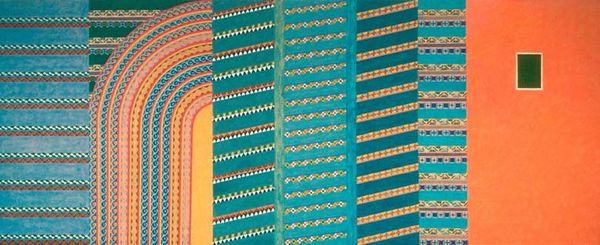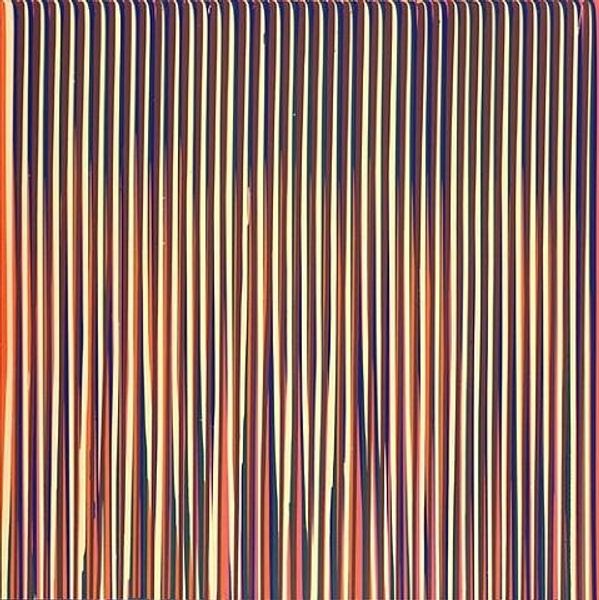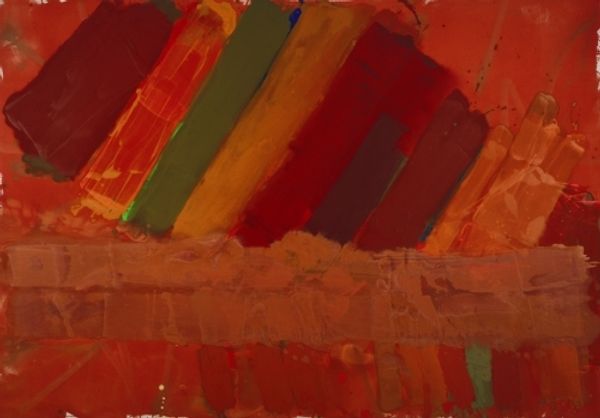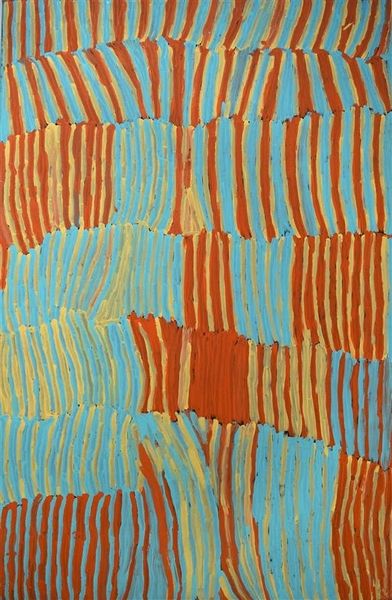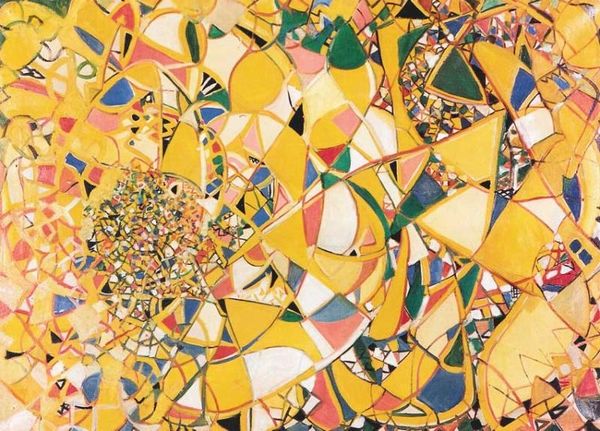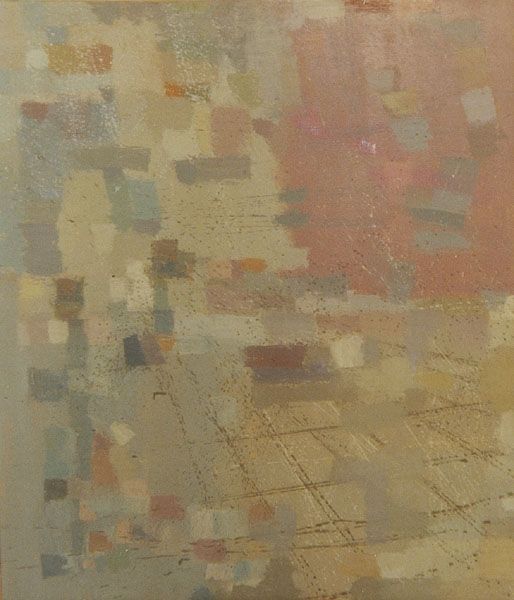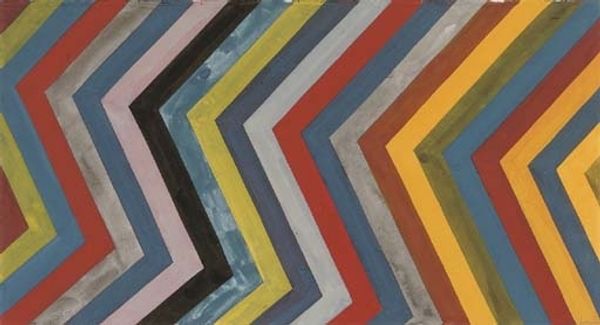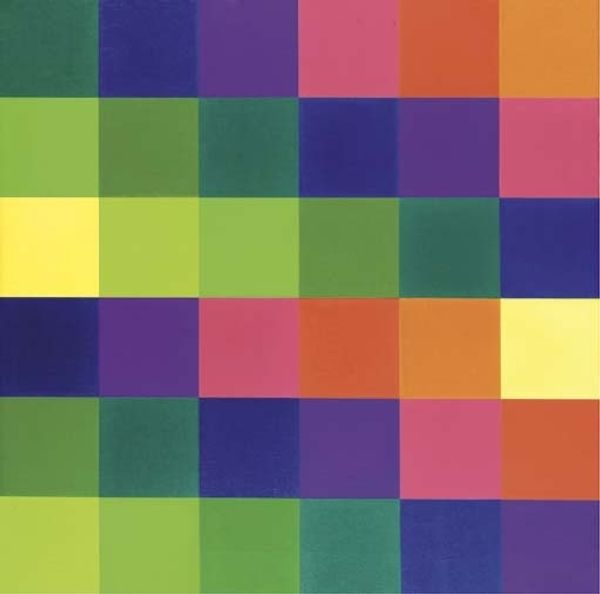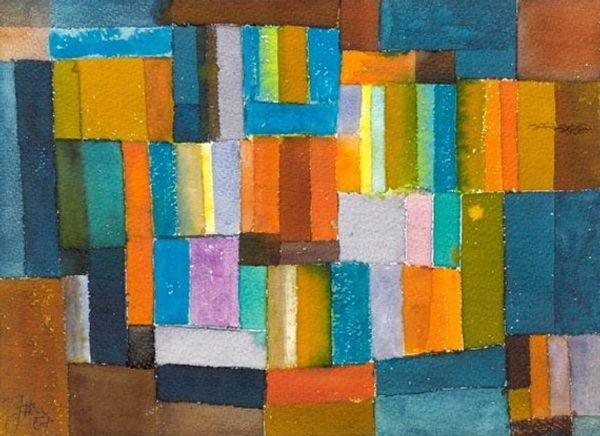
painting, oil-paint
#
painting
#
oil-paint
#
pattern
#
form
#
geometric pattern
#
abstract pattern
#
geometric
#
geometric-abstraction
#
line
#
futurism
Copyright: Public domain US
Curator: We’re standing before Giacomo Balla's "Iridescent Compenetration," painted in 1913. Look at this vibrant composition! What is your immediate reaction? Editor: Well, it’s immediately disorienting. A carnival of colours, reminiscent of harlequin’s attire… except the vibrancy almost tips into anxiety. There’s something slightly unsettling in this incessant pattern. Curator: Exactly. Note how Balla employs a geometric structure, an interlocking diamond pattern created with lines and contrasting color blocks in oil. It appears to capture something of modern urban space. Editor: I'm fascinated by what you say about 'urban space'. You see the dynamic pace and technological advances of the Futurists – which Balla co-signed – and I wonder, too, about the rise of industry, mass production, the individual being reduced to mere geometric form. Curator: An interesting point. Focusing purely on the formal elements, it is key how Balla deconstructs the surface. He’s not depicting three-dimensional space; he's creating a new, dynamic reality on the canvas. Note the lines and color at play together here, with its own set of relations that constitute the picture plane, reflecting upon itself. Editor: But that new "reality" is an abstraction rooted in a specific cultural and political moment. The Futurists' obsession with speed, war, and the machine was wrapped up in ideas of national strength and modernization at the expense of those who fell outside of an exclusionary paradigm. Curator: I agree. But what stands out to me is how Balla breaks from the old rules to showcase this new world—that new, machine-filled world— through a distinctly unique aesthetic. His radical treatment of form gives agency to each geometrical figure, an interesting idea given your points about mass-production. Editor: And Balla pushes us to recognize, too, how complicit art could be in those wider power structures; here, we are not seeing straightforward patriotic depictions but a bold attempt at forging what ‘modernity’ may look like. I leave still with that uneasy feeling... as if I am standing on very shifting grounds. Curator: An intriguing thought to close with. It speaks to the power of this piece, which transcends simple representation. It offers a lens through which to see ourselves and our relationship with a dynamic, abstract environment of early 20th-century urbanity. Editor: And maybe, we may begin to see those forces shaping us still, today, and into the future. Thank you.
Comments
No comments
Be the first to comment and join the conversation on the ultimate creative platform.


